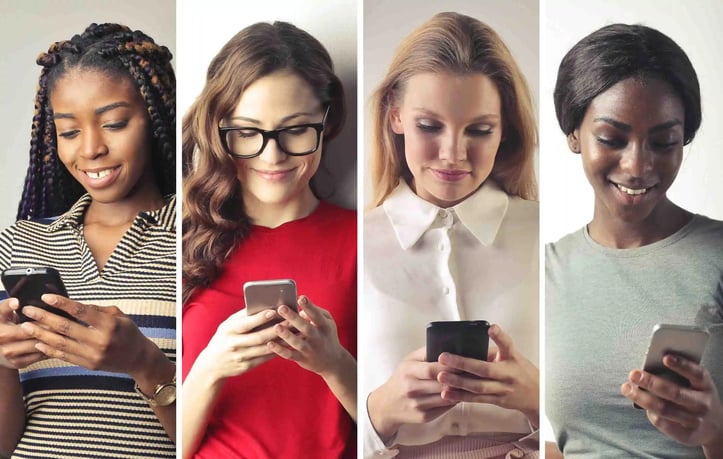
Trends and themes in women's health: Insights from the Women’s Health Innovation Summit USA 2023
September 2023
by Sarah Knight, Head of Healthcare Technology at 42T
Sarah Knight and Claire Lebouteiller recently travelled to Boston, MA, to attend one of the world’s largest events that focuses on women’s health innovation. In this article, Sarah shares some notable themes and trends that emerged, and which are shaping the future of this critical, underdeveloped area of healthcare.
Women's health is an expansive field
It includes conditions that disproportionately or more severely affect women, but also ones that have different symptoms, outcomes or treatment options and efficacies for women. Excitingly, the diversity of medical device innovations shared at the summit reflected the huge scope and scale of the field. From new IVDs for breast cancer screening (using tears!) to wearable neuromodulation devices to treat urinary incontinence, devices that detect or prevent pre-term birth to the first non-drug treatment for low bone density, the list goes on and on.
Personal experiences fuel start-up innovation
One striking observation from the summit’s ‘Showcase’ event was that start-ups in women's health often emerge from deeply personal experiences. Individuals who have encountered gaps in diagnosis and treatment first-hand are taking the initiative to develop solutions themselves. These experiences drive a strong motivation to address the profound shortcomings within women's healthcare, which are often marked by shocking gaps in care pathways. Notable examples include addressing maternity care deserts in the US and lengthy waits for endometriosis diagnosis worldwide.

Regulation: Filling treatment gaps while protecting patients is a tricky balance
The cautious approach of regulators, a reaction to some tragic scandals in the past, has made it particularly difficult to bring forward new innovations in women's health. But there is a growing sense of optimism in this regard, with the FDA recognising that patient communities are crying out for solutions to unmet needs – responding with initiatives such as the Breakthrough Devices Program. Those with long experience agreed that it is getting easier to bring new innovations to market. However, newcomers to the field highlighted that with many devices being completely novel, sometimes in the absence of any effective treatment at all, the evidential hurdle can be set very high.
Research gaps are shrinking slowly, with help from industry
One major concern discussed was the large gaps in academic research pertaining to many women's health issues. As well as hampering diagnosis, the scarcity of published data can be a hurdle to innovators trying to prove the feasibility of a new innovation. In response to this, innovators are turning the process around, providing devices and platforms that can gather anonymised datasets while providing useful individual insights. By feeding this into tools such as machine learning, they ultimately aim to provide women with a wider range of more accurate healthcare options.

Engaging with female patients in the realm of women's health presents unique challenges
Building trust with patients who have been historically ignored or dismissed by healthcare professionals is a complex and ongoing process. Additionally, data privacy concerns, particularly in light of the Dobbs decision, have made many patients cautious about sharing information – even with clinicians. As well as carefully designing transparency and control into their platforms, digital health innovators should be aware that some patients might just add junk data to any fields they don’t feel are important. If this data is used in analysis or to feed machine learning models, the output could be compromised.
Beyond all the challenges, the atmosphere was optimistic, collaborative and supportive
The summit provided a fascinating overview of the broad and evolving landscape of this crucial healthcare sector. The emergence of new innovations driven by personal experiences and shocking inequities, ongoing regulatory adaptation, the gradual growth of research, and the complexities of engaging with female patients are key trends and themes that will continue to shape the future of women's health. As innovators and healthcare professionals collaborate to tackle these challenges, women can look forward to ground-breaking advances in care, even in areas that have previously been overlooked.
If you would like to find out more, please contact 42T’s Craig Townsend:

craig.townsend@42t.com | +44 (0)1480 302700 | Craig's LinkedIn
Craig is the Director of Healthcare and Life Sciences at 42T.
Share this article:
Related Articles

Healthcare & Life Sciences
The future of home healthcare: trends and innovation

Healthcare & Life Sciences
Right to repair: reshaping the medical equipment industry

Healthcare & Life Sciences
The hidden risks with smart injectors - is high-tech sacrificing usability?

What will you ask us today?
We believe in asking the right questions to drive innovation; when we know the right questions, we generate the ideas to answer them.

